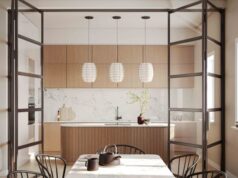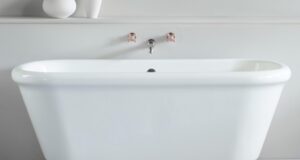
Acrylic benchtops are increasingly popular choice thanks to the creative freedom they offer, and thanks to the fact that they require very little in the way of maintenance.

What are acrylic benchtops?
Acrylic benchtops are made either of a basic acrylic polymer, or a composite of an acrylic polymer and a blend of natural minerals (depending on the particular product). Acrylic benchtops are made from a plastic that is poured into moulds to create sheets of a uniform thickness. These sheets can them be custom shaped using heat in a process called thermoforming.
Using this technology, acrylic benchtops can take on any number of shapes and styles. It’s not uncommon for acrylic benchtops to include moulded-in sinks, or drainboard grooves for under-mount sinks. Likewise, waterfall-style benches that bend down towards the ground at the end of the bench are also increasingly fashionable.
Acrylic benchtops are extremely versatile when it comes to aesthetics – they can be made in just about any colour and with a great variety of different textures, offering tremendous creative freedom if you need it.
What are the properties of acrylic benchtops?
Because they’re effectively made of plastic, acrylic benchtops have a fairly poor resistance to heat, so it’s important to not to allow hot pots and pans to come into direct contact with them.
Acrylic benchtops are hard wearing, but they aren’t completely immune to scratching and wear. Thankfully though, because the material’s uniformly coloured and textured all the way through, these types of benches can actually be gently sanded back like timber to repair scratches, scrapes or nicks. Special proprietary abrasives and scourers are available for this purpose.
Acrylic benchtops are non-porous, and as a result they’re anti-microbial and very hygienic – and they won’t stain like natural stone can. Caring for acrylic benchtops is as easy as wiping them down with a cloth and a regular multi-purpose cleaning agent.
|
Advantages
|
Disadvantages
|





